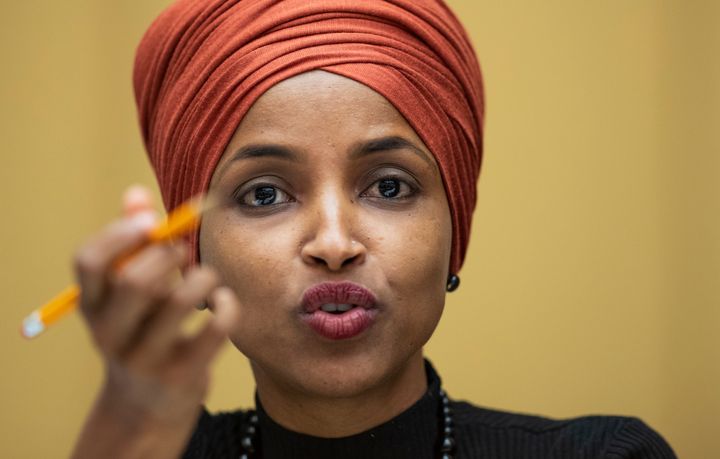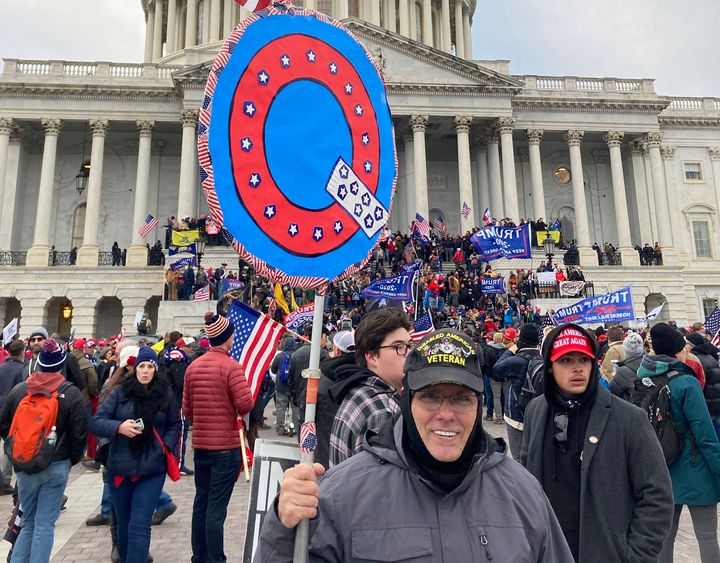[ad_1]
Donald Trump’s 2017 inaugural speech was dark.
“That was some weird shit,” former President George W. Bush reportedly said at the time.
Trump portrayed an America overrun by undocumented immigrants, “poverty in our inner cities,” “rusted-out factories scattered like tombstones across the landscape of our nation” and “crime and gang and drugs.”
He was going to take back America and make it great again.
“This American carnage stops right here and stops right now,” he declared.
But the past four years with Trump in the White House have been just as violent and dark as his inaugural speech. It’s been a time of immense pain and suffering, particularly for minorities and people of color who have been demonized by the president.
“American carnage is really his legacy. It’s not what he fought against,” said Heidi Beirich, co-founder of the Global Project Against Hate and Extremism.
What we’re seeing is a man who really gets off on violence. He gets off on the pain, he gets off on the bloodshed.
Carol Anderson, chair of African American Studies at Emory University
Trump ended his presidency by bringing the carnage right to the U.S. Capitol, the same spot where he stood and gave his inaugural address in 2017.
On Jan. 6, at a “Stop the Steal” rally to challenge the results of the 2020 election, Trump encouraged his supporters to walk to the Capitol, telling them they would “never take back our country with weakness.”
They listened. They climbed walls, broke through windows and attacked police officers to break into the building on behalf of the president.
They weren’t just overheated protesters. They planned to “capture and assassinate elected officials,” according to federal prosecutors. And their primary targets were politicians whom Trump himself had criticized ― including his own vice president. Trump was furious that Mike Pence was going to carry out his duties by certifying Joe Biden as the winner of the election, and he told his supporters to make him “do the right thing.”
The carnage brought on by Trump resulted in the deaths of five people, including a police officer.
“He’s always signaled what he was thinking, what he was going to do. And that language of carnage was what he had planned for us,” added Carol Anderson, the chair of African American Studies at Emory University.
“What we’re seeing is a man who really gets off on violence. He gets off on the pain, he gets off on the bloodshed,” she added.
Trump has been inciting violence since the very first day of his campaign, when he said Mexican immigrants were “rapists” who were “bringing drugs” and “bringing crime.”
He consistently invited violence against protesters at his rallies, urging the crowd to go after them. At a rally in 2016, Trump said: “If you see somebody getting ready to throw a tomato, knock the crap out of them, would you? Seriously. Just knock the hell out of them.” That same year, he was thrilled when one of his supporters did punch a Black protester, later saying, “that’s what we need a little bit more of.”
Journalists, people of color, Democratic politicians and others have all been targets of his violent rhetoric.

“I do not worry for myself, but I worry about the consequences of this violent rhetoric on our fragile republic,” Rep. Ilhan Omar (D-Minn.), one of the first two Muslim American women elected to Congress, told HuffPost recently. Trump has frequently tried to characterize her as anti-Semitic and anti-American.
“The legacy of this hatred will continue for decades,” she added, “and it is up to all of us to ensure that this ideology can never hold power in our republic again.”
One of the most shocking moments in the Trump presidency remains his comments after the 2017 white supremacist march in Charlottesville, Virginia. It turned deadly after one of the white supremacists deliberately plowed his car into a crowd of peaceful counter-demonstrators, killing one woman, Heather Heyer.
“You have people who are very fine people on both sides,” Trump said, instantly empowering the hateful movement.
“This administration dispensed with the need for dog whistles, and then just shouts it from a bullhorn. You cannot unring a bell. You cannot,” said Lisa Woolfork, an anti-racism organizer in Charlottesville.

“He encouraged the most extreme voices on the radical right. He built their ranks. He emboldened them,” Beirich added, reflecting on Trump’s inaugural speech. “We sit here four years later, and there’s a coalition now of white supremacists working with militia tribes with QAnon. And remember ― there was no QAnon four years ago. It’s like a complete creation of the Trump age, thanks to social media companies as well. And Trump has actually built the coalition that is going to rain the carnage down on us like we saw at the Capitol last week.”
QAnon followers believe a bizarre, baseless conspiracy theory that Trump is battling a Satanic-worshipping “deep state” of child traffickers, composed primarily of Hollywood celebrities and Democratic politicians. Two QAnon supporters are now in Congress, and QAnon backers were prominent during the Jan. 6 siege on the Capitol.
Stopping the carnage was a central part of Trump’s reelection pitch as well. His campaign ran ad after ad going after Black Lives Matter protests and the “defund the police” slogan, arguing that a vote for Biden and the Democratic Party was a vote for lawlessness and “mob rule.”
“I have no doubt, and I’m sure you don’t, when President Trump is reelected, the damage will stop,” former New York Mayor Rudy Giuliani said at the 2020 Republican National Convention.
The problem was that Trump promised violence would stop if he were elected in 2016 as well.
“I have a message for all of you: The crime and violence that today afflicts our nation will soon come to an end. Beginning on Jan. 20, 2017, safety will be restored,” Trump said at the 2016 convention.
Yet everything Trump has been complaining about has been happening on his watch. The carnage did not stop.
And crime was not Americans’ primary concern in the past election. The coronavirus dominated the headlines, and all the health and economic carnage that came along with it. Trump consistently downplayed the virus and said it would go away on its own or promoted quack “cures” like ingesting cleaning products.
The pandemic is still raging, and Trump has essentially stopped paying any attention to it in his final weeks in office.
“This regime doesn’t bring joy. It brings rage. It brings violence,” Anderson said. “When we think about the 2020 election, we had so many people who wanted to feel joy again. And you couldn’t have that in this kind of regime. COVID-19, child separation at the border, police murdering Black folk and Trump reveling in the violence, spurring it on.”
Trump will not be attending Biden’s inauguration on Wednesday. He plans to leave for Florida ahead of time, and he has put out a statement saying there “must be NO violence, NO lawbreaking and NO vandalism of any kind” this week as the nation’s capital and cities around the country prepare for Trump supporters to stage violent protests or worse. Trump has shown no remorse for his role in the Jan. 6 mob at the Capitol.
But his legacy of violence will still be felt. Washington is heavily locked down, resembling a war zone more than a city ready to celebrate a new president. Large sections of the district are heavily fortressed a shut off in an effort to prevent more chaos during inauguration week. The National Mall is closed. And D.C. Mayor Muriel Bowser (D) said the city may never go back to normal.
Trump’s violence has also been carrying itself out more quietly in his final days in office, far away from lawmakers at the Capitol. He has rushed to carry out an unprecedented rash of executions, with the final one just five days before Biden ― an opponent of the death penalty ― is set to take office.
According to The Associated Press, Trump has overseen more executions than any other president in 120 years.
“That American carnage has done such damage to us ― to our institutions, to the way that we see ourselves, to our values, to families, to the economy,” Anderson said. “Just damage.”
Calling all HuffPost superfans!
Sign up for membership to become a founding member and help shape HuffPost’s next chapter
[ad_2]
Source link